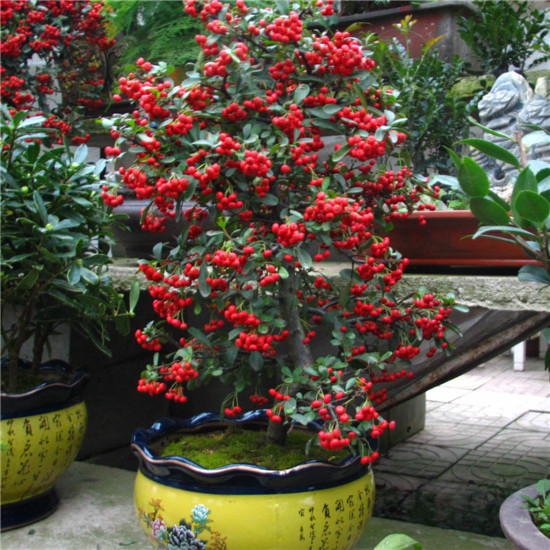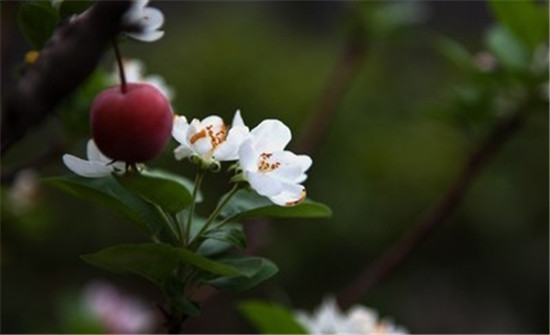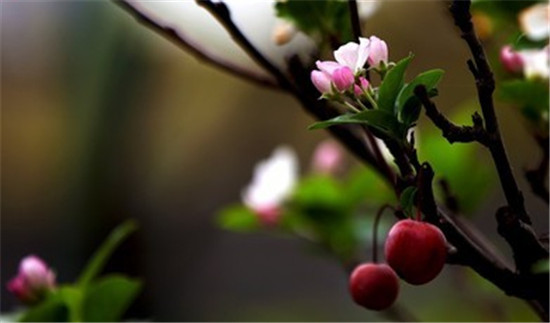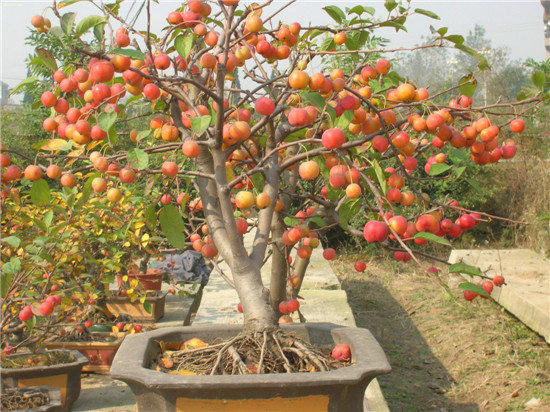Maintenance methods of Winter Red Fruit potted
Winter red fruit is a deciduous shrub or small tree of Rosaceae and apple. Next, let's take a look at the conservation methods of winter red fruit pot cultivation.

The winter red fruit plant is short, the branch is grayish brown, the fruit is oval spherical, the single fruit weighs 10 grams to 20 grams, it is green at first, then it is yellow gradually, then it is bright red after maturity, the skin is smooth, does not fall off through winter, and can continue to fall off from February to March of the second year. The propagation of winter red fruit can use the seedlings of begonia, bauhinia or apple as rootstocks, strong branches or plump buds in the middle as scions, and grafting by means of split grafting, cutting grafting and bud grafting.
The propagation of winter red fruit can use the seedlings of begonia, bauhinia or apple as rootstocks, strong branches or plump buds in the middle as scions, and grafting by means of split grafting, cutting grafting and bud grafting.

Winter red fruit is a variety of apple, its tree shape is compact, the spring light pink flowers are full of branches, the autumn and winter trees are covered with exquisite and lovely fruit, its fruit shape is very similar to apple, suitable for garden planting or potted ornamental, bonsai production.
Donghongguo likes a sunny, cool and dry environment, resistant to cold, afraid of damp and hot, suitable for growing in sandy soil rich in humus, loose and fertile, and well drained. Generally transplanting or potting in spring every year, sufficient sunlight is required during the growing period. if the light is insufficient, it will affect the color, plant shape and fruit of the fruit, so the ground planting can be planted in the sunny ventilation place of the courtyard. Potted plants should be placed in a sunny place.

During the growing period of winter red fruit, the soil is moist without stagnant water. June of each year is the flower bud differentiation period. Watering should be controlled for 2 to 3 weeks and then watered when the young leaves wilt so as to promote the formation of flower buds. Nitrogen fertilizer can be properly increased in the early stage of plant growth, and after June, the application of nitrogen fertilizer can be controlled or stopped, and the application amount of phosphorus and potassium fertilizer and trace elements such as calcium and magnesium can be increased to improve fruit quality and ornamental effect, and enrich the development of branches, which is beneficial to the formation of flower buds. And remove the tender tip at the top of the branch in time to prevent the branch from lengthening and redistribute nutrients, which is beneficial to the development of fruit.

Winter red fruit is not resistant to high temperature, if it is higher than 35 ℃ for a long time in summer, it can be properly shaded and ventilated to cool down. In winter, potted plants can bury the flowerpot in outdoor shelter or in a cold room of 0 ℃ to 10 ℃ to survive the winter. Pruning and shaping the plant before germination in spring, cutting off diseased branches, cross branches, overdense branches and overgrown branches, and truncating the overlong branches to facilitate ventilation and light transmission, and to keep the tree shape graceful.
Winter red fruit is Rosaceae, 5-12 flowers in clusters, light pink flowers, blooming in spring, smooth skin, do not fall through winter.
The above is all the contents of the conservation methods of winter red fruit pot cultivation that I have summarized for you. I hope this article can help you all. Please continue to follow us.
Related
- Wuhan Hospital Iron Tree Blooming Result Was Instantly Frightened by the Gardener Master
- Which variety of camellia is the most fragrant and best? Which one do you like best?
- What is the small blue coat, the breeding methods and matters needing attention of the succulent plant
- Dormancy time and maintenance management of succulent plants during dormancy
- Minas succulent how to raise, Minas succulent plant pictures
- What are the varieties of winter succulent plants
- How to raise succulent plants in twelve rolls? let's take a look at some experience of breeding twelve rolls.
- Attention should be paid to water control for succulent plants during dormant period (winter and summer)
- Watering experience of twelve rolls of succulent plants
- Techniques for fertilizing succulent plants. An article will let you know how to fertilize succulent plants.



